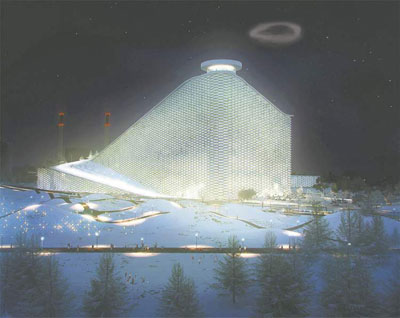 Winnipeg is a garbage city.
Winnipeg is a garbage city.
We send more of it to the landfill than any other municipality in Canada, generating 750,000 tonnes of waste each year. This is equal to the weight of nearly 200,000 full grown African elephants, representing more than 1,000 kilograms from each citizen. Even with a blue box in every home, we divert only 17 per cent of our waste from the landfill, the lowest recycling rate in the country and one-third of what cities like Vancouver and Toronto accomplish. That's a lot of elephants.
The most recent topic for discussion in Winnipeg's coffee shops and hockey rinks has been the city's less-than-seamless transition to an automated garbage and recycling collection system.
As we wait for the wrinkles to be ironed out, it's important to remember the new garbage bins are a fundamental first step in a comprehensive new master plan that will help improve our city's dismal waste-management statistics. The goal is to double recycling rates to 35 per cent in five years and to achieve 50 per cent by the year 2020.
The master plan will also implement measures to reduce the environmental impact of the Brady Road Landfill, including greater control of leachate, a toxic liquid that filters down through the garbage. Currently, six tanker trucks each day are filled with leachate pumped from the landfill, and driven across the city to be processed at a wastewater treatment plant.
Nearly 10 per cent of Canada's greenhouse gasses come from landfill sites. The decomposition of organic waste produces methane, a noxious gas contributing to climate change. At Brady Road, annual greenhouse gas emissions are equivalent to that of approximately 70,000 passenger vehicles.
Many cities are looking at creative ways to solve and even capitalize on this environmental burden by replacing landfill sites with 'waste to energy' facilities. Clean burning modern incinerators can transform waste materials into heat, electricity and recyclable metals. In Vancouver, a single plant produces steam for a local paper mill and enough electricity to power 15,000 homes. In Edmonton, a facility is under construction that will produce 40 million litres of biofuels (ethanol) per year, while eliminating the equivalent greenhouse gas emissions of 45,000 vehicles.
Last month, the city of Copenhagen, Denmark, decided to take the concept to the next level by approving construction of the most unique waste to energy plant in the world, to be built near the city centre.
Designed by Danish star architects Bjarke Ingels Group (BIG), the building will be one of the world's largest and most technically advanced waste-treatment plants, where a single household garbage bag can be transformed into four hours of heat or electricity for a typical house. When completed in 2016, the facility will provide that heat and electricity to 70,000 homes in central Copenhagen.
What sets the Amagerforbraending plant apart is it transforms a typically industrial building type into an architectural landmark. It is envisioned as a destination, a civic amenity and tourist attraction for the entire region, creatively redefining the relationship industrial buildings can have with the city.
Danes love to tell visitors how flat their country is, often remarking its highest point is on the bridge to Sweden. BIG's new treatment plant will make up for this lack of topography by rising like a mountain from the land, to a peak nearly 100 metres above the city. Its facades will be wrapped in vertical planters filled with cascading vegetation that will enhance the mountain metaphor.
Most spectacularly, its angled roof will be a winding outdoor ski slope constructed of a recycled synthetic granular material forming multiple runs of varying difficulties. Access to the slopes will be by elevator in the smokestack offering views into the plant and providing glimpses of its internal workings on the way to the mountain summit.
Bjarke Ingels, the building's charismatic young architect, calls the design an example of 'hedonistic sustainability.' His message is environmental responsibility does not have to be a burden, but can be fun, improving the quality of urban life. The plant is an example of a building that is economically, ecologically and socially sustainable. It will be a youthful and dynamic celebration of Danish creativity and commitment to the environment.
In a last bit of Danish irreverence, the smokestack will be modified to store what small amount of emissions the plant does create, releasing a 30-metre diameter smoke ring every time one tonne of carbon dioxide is produced. This is intended to serve as a visible reminder of the impact of consumption for people in the surrounding communities.
At a cost of $650 million, the Danish waste-treatment plant represents a significant investment in the values of environmental responsibility by the citizens of Copenhagen. With an inspired and fearless commitment to new ideas, the Danes are building a city not much larger than Winnipeg that leads the world in creative thinking and quality of life for its citizens.
Winnipeg is as flat as Copenhagen, but it's difficult to imagine there ever being similar public enthusiasm to solve our environmental challenges with such grand creativity and inspiration. The challenges of our larger garbage cans seem somewhat insignificant by comparison.
Brent Bellamy is senior design architect for Number Ten Architectural Group.
Republished from the Winnipeg Free Press print edition November 12, 2012 B4

